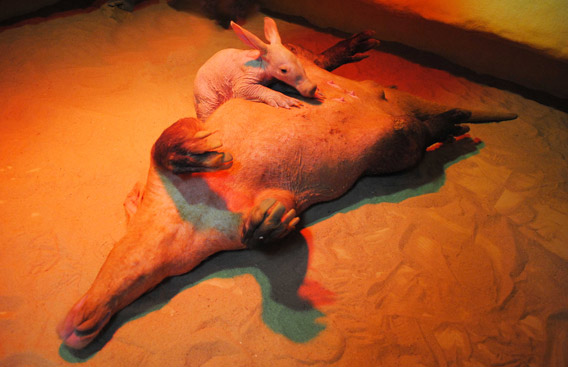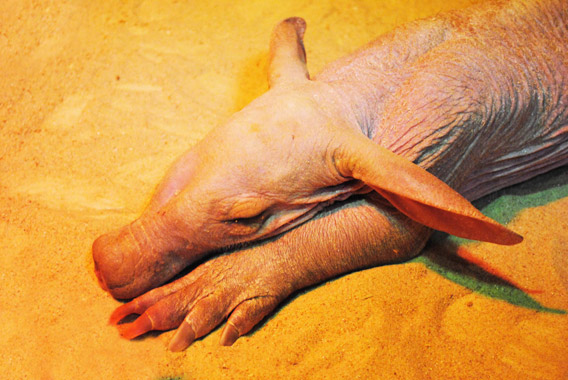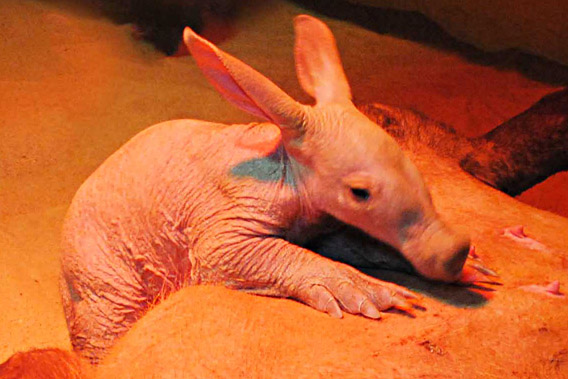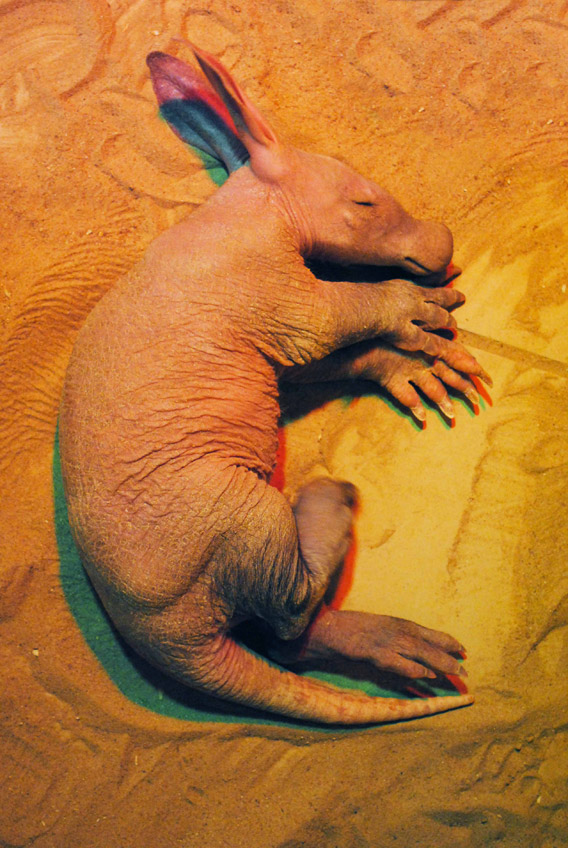
Baby aardvark with mom. Photo courtesy of the Colchester Zoo.
A female aardvark (Orycteropus afer) named Oq gave birth last month to her seventh baby, making the breeding program at Colchester Zoo one of the most successful in Europe.
The aardvark is the only surviving species of the mammalian order, Tubulidentata. According to the conservation program, EDGE, this make the aardvark the world’s most evolutionary unique mammal.
“[The aardvark] has the highest score for being the most evolutionarily distinctive (ED) using the EDGE scientific method. Species such as the aardvark are much more distinct than others because they represent a larger amount of unique evolution: they have few or no close relatives and have been evolving independently for millions of years,” EDGE writes in a recent blog.
Aardvarks are found throughout sub-Saharan Africa. They are listed as Least Concern by the IUCN Red List given their wide range and seemingly healthy populations. Although aardvarks do face some pressure from habitat loss and possibly hunting. They are important species in their environment, since their massive burrows are used by a wide variety of other animals.

Baby aardvark sleeping. Photo courtesy of the Colchester Zoo.

Baby aardvark on back. Photo courtesy of the Colchester Zoo.

Close-up on aardvark baby. Photo courtesy of the Colchester Zoo.

Aardvark baby. Photo courtesy of the Colchester Zoo.